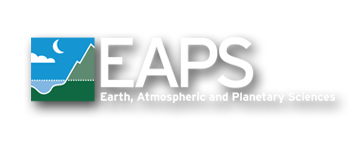Featured Stories, MIT, MIT EAPS, News | January 22, 2018
Meet the Postdocs of E25
Contributing to the Program of Atmospheres, Oceans and Climate’s McGee, Boyle and Summons labs
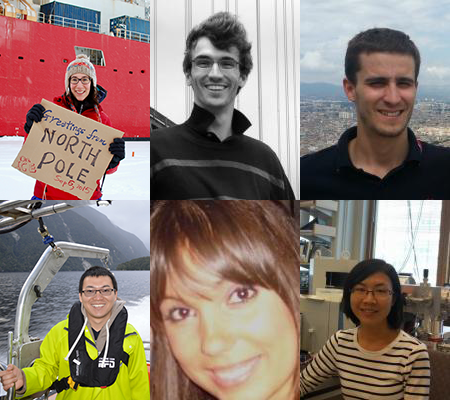
By Lauren Hinkel
Over in building E25, an arm of MIT’s Department of Earth, Atmospheric and Planetary Sciences (EAPS), postdoctoral fellows and associates are busy keeping up with the past. These members of the Program in Atmospheres, Oceans and Climate (PAOC) within the department are investigating fields ranging from paleoceanography and paleoclimatology to biogeochemistry, paleolithic archaeology and cosmochemistry in the lab. Under the advisement of EAPS professors David McGee, Edward Boyle and Roger Summons, postdocs Simone Moos, Francois Tissot, Julien Alleon, Xingqian Cui and Ainara Sistiaga have developed new techniques and uncovered data supporting new scientific narratives in their respective fields.
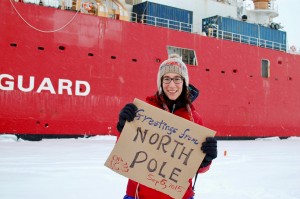
Simone B. Moos originally joined the Boyle Lab in 2011 as a graduate student in the MIT-WHOI Joint Program in Chemical Oceanography. After successfully defending her thesis “The Marine Biogeochemistry of Chromium Isotopes” in September 2017, she remains in the group as a postdoc.
Moos developed one of the first methods to measure chromium (Cr) isotope ratios in seawater. A critical step to doing this is reliably preconcentrating and purifying nano-molar chromium from the seawater matrix, which is challenging and has only been achieved by two other research groups in the world.
Chromium isotope signatures in the geologic record have been used to assess past atmospheric oxygen conditions, but with very little data reported from the modern marine and terrestrial environment, the interpretation of these isotope ratios is difficult. During her PhD, Moos analyzed water column profiles from the Arctic, Central North Pacific, Eastern Tropical North Pacific oxygen-deficient zone, and the partially anoxic Santa Barbara Basin. Her data show for the first time that the reduction of Cr(VI) to Cr(III) in oxygen-depleted seawater is accompanied by significant isotope fractionation. The lighter isotopes preferentially transform to Cr(III), which is scavenged from the water column due to its particle reactivity, resulting in heavier residual chromium.
In 2015, Moos traveled from Alaska to the North Pole aboard the icebreaker USCGC Healy. This expedition was part of the international research program GEOTRACES, which studies the biogeochemical cycling of trace elements and their isotopes in the ocean. During the 10-week Arctic mission, Moos collected seawater samples for her own innovative work, the Boyle lab’s long-standing lead isotope research, and the wider US trace metal community. As many questions regarding the marine chromium cycle remain unanswered, Moos will continue analyzing chromium isotope signatures of seawater samples during her postdoc.
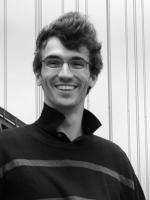
Francois Tissot is the MIT Department of Earth, Atmospheric and Planetary sciences (EAPS) Crosby Postdoctoral fellow and an isotope cosmochemist. He studies how the solar system and the Earth formed and evolved, and what processes shaped these bodies. To do this, he measures the relative abundances of heavy element isotopes like uranium or molybdenum in various samples, looking for minute differences. These can be used to indicate and trace large-scale processes, like the formation of planets, or the global change in the oxygen content of the ocean through time.
In the last year, Tissot has split his time between two projects. One includes measuring uranium isotopic composition of angrites, a type of meteorite, from a planetesimal (a small planet) of about 200-500 kilometers in diameter that formed early in the solar system’s history and was later disrupted by planetary collisions. Pieces from these collisions eventually reached Earth as meteorites.
Angrite meteorites play a key role in our understanding of the solar system, acting as an ideal reference to anchor other samples that can only be dated using one technique. They can do this because they contain a variety of minerals that can be used to calculate the age difference between angrites and other solar system materials, such as the oldest rocks in the solar system, CAIs, for calcium aluminum rich inclusions. By measuring the uranium isotope composition of the samples with high precision, Tissot was able to revise the absolute ages of angrites by up to a million years, and therefore refine the relative chronology of the early solar system, supporting the old age of 4567.9 ± 0.3 million years.
Tissot’s other project examines carbonates from a well-characterized drill core in the Bahamas, with individual samples ranging in age from 0 to 1.5 million years old. Recently, researchers have used uranium isotopic composition of carbonates as a tracer for measuring ocean oxygen, trying to reconstruct levels in the past and assuming that the carbonates are a direct record of seawater composition. Tissot’s work found this assumption to be flawed since formed carbonate samples can undergo secondary processes, such as sample dissolution, recrystallization and fluid-circulation, which together with variations in the sea level, can impart large variability in the uranium record on short timescales. He hopes to devise ways to account for the effect of these processes to uncover how and when oxygen appeared in the past ocean.
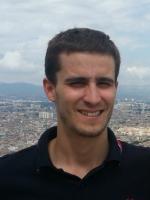
Biogeochemist Julien Alleon studies the potential preservation of microorganism molecular biosignatures in ancient rocks and the processes that compromise our ability to read their deep time record. His research combines characterization of natural samples using advanced spectroscopic techniques and simulation of the fossilization processes in the lab.
The early life fossil record is based upon a limited number of carbonaceous microstructures, which are often controversial. Complications in their assessment mainly arise from the possible contamination of old rocks by more recent carbonaceous matter and the poor preservation of organic biosignatures in the metasedimentary rock record. Several factors inevitably alter the original signatures like biodegradation and fossilization processes and increasing temperature and pressure conditions during burial. After a point, biogenic and abiotic organics appear similar.
Alleon addresses these concerns in a couple ways. For the first, he uses a combination of high spatial resolution techniques to ensure that he analyzes old organics within the host rock and not recent contaminants. This allows him to make microscopic observations with chemical sensitivity, i.e., in situ mapping of organics within rocks at a 15-nm spatial resolution, to precisely estimate the nitrogen-to-carbon atomic ratio of organics, as well to collect key information about carbon and nitrogen speciation at the submicrometer scale.
The second issue requires constraining the impact of fossilization processes to eventually reconstruct the original chemistry of the potential microfossils. Since most Precambrian rocks experienced temperatures exceeding 100 °C over geological timescales, it is believed that the original organic molecules underwent significant chemical and structural transformations, leading to a thermally mature carbon-rich macromolecular material which may be difficult to distinguish from abiotic organic materials. However, Alleon’s observations suggest that this degradation may not be as inevitable as previously thought. Fragile biomolecules like proteins were partially preserved in microorganisms fossilized in 1.9 billion-year-old sedimentary rocks in Canada, despite being submitted to such high temperatures. As suggested by experimental work, their siliceous mineral matrix was likely responsible for this remarkable preservation.
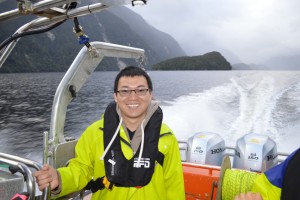
Xingqian Cui is an oceanographer and geologist in the Summons Geobiology and Astrobiology lab. His research interests include organic geochemistry, biogeochemistry, carbon cycling and climate change.
At MIT, Cui has been working on a few projects. The primary one is studying the South Atlantic Ocean in the Early Cretaceous period (about 146 to100 million years ago) when it was a lacustrine environment and separated from the global ocean. He’s interested in tracing the timing of seawater intrusion into the South Atlantic Ocean pre-salt deposition in rock samples from the early rift to late rift periods, both climatically and tectonically. Some of Cui’s results suggest that this may have happened much earlier than previously thought.
Another project that he considers the most exciting of his research pursuits is investigating the emergence and evolution of early life, primarily focusing on the earliest Eukaryotes. Poor preservation of trace signals has made this task difficult and debatable. Researchers use three major ways to investigate this topic: molecular clock, biological markers and fossil record. A recent study using a molecular clock suggested that eukaryotes may have emerged by the Mesoproterozoic era (1,600 to 1,000 million years ago). However, no convincing biomarker studies have been able to support this. Report of macro eukaryote fossils found in Mesoproterozoic Era in China is contested based on the morphology of the fossil. In order to examine the plausibility of this hypothesis, Cui and his group will be analyzing biological markers preserved in these samples.
Cui also researches carbon cycling in modern coastal systems, focusing on fjords in his PhD work. The coastal ocean buries the majority of carbon in the ocean and is the largest carbon sink on Earth. As climate change progresses, research has suggested that the coastal carbon cycle will respond instantly. As such, regions like fjords will likely play a disproportional role in this and regulating the climate. In this project, Cui is looking at how carbon dynamics in fjords vary laterally and temporarily. And, as a continuation of his previous work, he is interested in using fjords as modern analogs to investigate glacier-perturbed carbon cycling in the Neoproterozoic Era (1,000 to 541 million years ago).

Ainara Sistiaga, the Marie Curie postdoctoral fellow at MIT and the University of Copenhagen, works at the intersection of organic chemistry in archaeology and human evolution. As a visiting PhD student and now a postdoc in the Summons Lab, Sistiaga, uses techniques in organic geochemistry and paleolithic archaeology to investigate the role of diet and the gut microbiome in human evolution. Sistiaga analyzed fecal samples in sediment from El Salt, a Neanderthal site in Spain, for biomarkers of metabolized animal and plant lipids, and found evidence for substantial plant ingestion, which represents the oldest evidence of hominin omnivory and human fecal matter (50,000 years) found thus far. This implied that Neanderthals from this area, though having a meat-based diet, complemented their nutrition with plants. Previously, scientists had been looking at isotopes of carbon and nitrogen in bone collagen to evaluate Neanderthal diets, but this technique only shows the protein portion of their diet and they aren’t well preserved in this region. Her previous work on wild chimpanzees and gorillas helped her to better understand the effects of this bacterial conversion on the ingestion of cholesterol rich food.
Each summer, she also performs paleoenvironmental reconstruction in Tanzania, where some of the first humans were thought to have evolved. Samples from the site date back 2 million years, and by studying n-alkanes from the plants, Sistiaga can better understand the ecological context of evolutionary and dietary pressures humans were under at the time.
Another of Sistiaga’s fieldwork projects aims to trace the evolution of the human gut microbiome from ancient humans to the present. As research is being done on the microbiome, scientists are beginning to appreciate its importance in human biology, but little is understood about its coevolution in humans, since DNA and proteins degrade quickly in the fossil record. Since lipids are more stable on longer timescales, Sistiaga is analyzing samples from mummies to present-day populations looking for connections. She’s focusing on non-westernized cultures since less is known about them, analyzing fecal samples and genome sequences from people in more than 50 countries. Sistiaga is isolating and examining lipid biomarkers, which she can then match to specific gut bacteria that are responsible for their production, building a database. She’s working with the MIT Department of Biological Engineering’s Eric Alm lab and the Broad Institute to help preserve the samples, which could one day contribute to medical therapies related to the microbiome.

Working in the Summons’ group, Xiaowen Zhang’s research focuses on searching for viable chemical means for probiotic synthesis of membrane-forming lipids under laboratory conditions.
Zhang got her PhD in geology, looking at carbon cycling in Arctic river systems in the last three thousand years using isotope and biomarker signatures. Once joining the geobiology lab at MIT, she extended the scope of her research from thousands of years to millions or billions of years old. She’s examining the environmental conditions necessary for early life using compound-specific isotope analyses of biomarkers like carotanes and methylhopanes, which are preserved in rock samples.
In one of her projects, she studies the ecological structure of Mesoproterozoic marine communities in rocks collected from the Barney Creek Formation in North Australia’s McArthur Basin. Some of these samples date back to 1.64 billion years ago and have biomarker signatures, like particular aromatic carotenoids, indicating that complex life (eukaryotic algae) was present, as well as a widespread anoxic, sulfidic marine environment that could have supported the earliest eukaryotes on Earth. However, scientists debate whether certain signals are from eukaryotes, since they could potentially be contaminated with organic matter. Zhang’s process to analyze these samples avoids this contamination, generating more reliable results.
Zhang is also working to optimize the purification method of lipid extractions from rock samples. Biomarkers like lipids extracted from organic, lean rock always have an extensive hump of unresolved complex mixture (UCM) when running on GC-MS, which hinders the isotopic detection of some important biomarkers. Thus, in the previous case, improving the detection ability by removing UCM will enable the differentiation of bacteria types present in those rock samples. Furthermore, this work will widen the application of this technique in geobiology and paleoclimatology.



